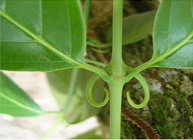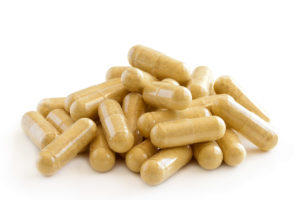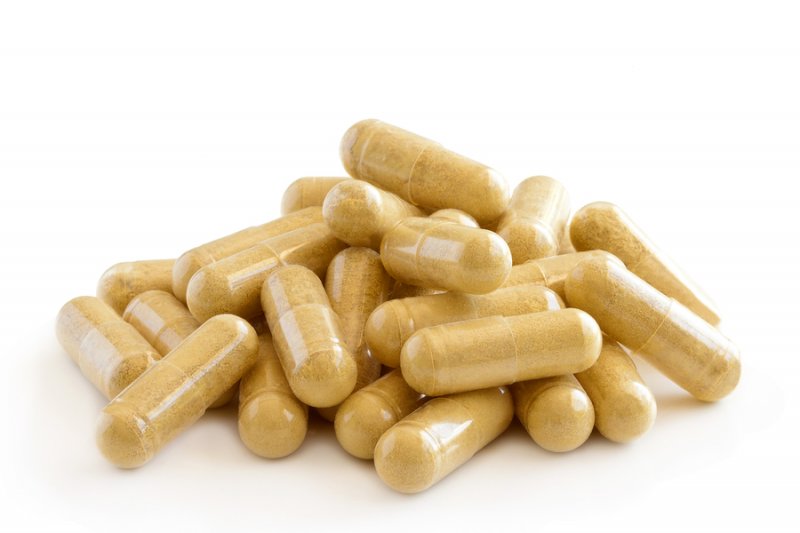Table of Contents
Cat’s Claw (Uncaria tomentosa, Uña de Gato, or Savéntaro) is a South American vine used as a nootropic with potent anti-inflammatory and antioxidant effects that support DNA repair, immune function and normal cell division.[i]
For cognitive health, Uncaria tomentosa has been used to prevent inflammation, promote cerebral circulation, fight amyloid plaques in Alzheimer’s and possibly even boost acetylcholine (ACh).
Cat’s Claw is a member of the plant family Rubiaceae, genus Uncaria that consists of at least 34 different species found in tropical forests of Southeast Asia, Africa, Central and South America.
When choosing a Cat’s Claw nootropic supplement, you need to know that at least 12 different and unrelated herbs have been marketed as Uña de Gato or Cat’s Claw.
The two South American species are Uncaria guanensis, a lower altitude shrub, and Uncaria tomentosa, a higher altitude woody vine found particularly in Peru.
The root and inner bark of the stalk of Uncaria tomentosa contains 30 known constituents including at least 17 alkaloids, along with a number of other compounds.
Researchers first thought it was the oxindole alkaloids that provided Cat’s Claw health benefits. More recently, a water soluble extract called C-Med-100® (AC-11®) was shown to possess strong antioxidant and anti-inflammatory effects.
C-Med-100® does not contain a significant amount of alkaloids. Instead the bioactive nootropic benefits of this vine are quinic acid esters.[ii]
When selecting a Cat’s Claw supplement for nootropic use, read the labels carefully. And choose only Uncaria tomentosa. We’ll have more about selecting the right supplement later in this post.
Cat’s Claw helps:
- Brain-Derived Neurotrophic Factor (BDNF). Research shows that Cat’s Claw boosts BDNF, tames NMDA activity, and repairs damaged DNA. Promoting an environment in your hippocampus for neurogenesis which is essential for learning, memory and mood. Low BDNF can lead to major depression, OCD, schizophrenia, and dementia.
- Neuroprotection. Cat’s Claw is a powerful antioxidant and anti-inflammatory. Cat’s Claw protects your brain from inflammation and damage from free radicals. Chronic inflammation has been linked to depression and dementia. Cat’s Claw also reduces the formation of plaques that are associated with Alzheimer’s Disease.
- Neurotransmitters. Cat’s Claw boosts Tryptophan levels which increases serotonin and can provide a calming effect. Cat’s Claw affects serotonin (5-HT2) receptors which helps alleviate pain.
Overview
Cat’s Claw (Uncaria tomentosa, Uña de Gato, or Savéntaro) is a large, woody South American vine that gets its name from the hook-like thorns on the leaf stem resembling the claws of a cat.

Cat’s Claw is indigenous to the Amazon rainforest and other tropical areas of South and Central America. Cat’s Claw has been used medicinally by the Aguaruna, Asháninka, Cashibo, Conibo, and Shipibo tribes of Peru for at least 2,000 years.
The Asháninka use Cat’s Claw for everything from asthma to urinary tract viral infections to cancer. I won’t go into the long list of ailments Cat’s Claw is used for here because we’re focusing on the cognitive benefits of this herb. Just rest assured, Cat’s Claw has an amazing track record.
Most of the commercially grown Cat’s Claw (Uncaria tomentosa) we get for nootropic use is from Peru. Cat’s Claw is rich in phytochemicals, alkaloids, glycosides, tannins, flavonoids, sterol fractions and other compounds.
Ignore the marketing hype of “good alkaloids”, “bad alkaloids” and “TAO-Free” for Cat’s Claw. Independent research since the early 1970’s in animals and humans have used everything from freeze-dried ground root and bark to individual extracts of specific Cat’s Claw compounds.
Cat’s Claw has been shown to decrease inflammation of arthritis[iii], prevent DNA damage[iv], reduce free radical damage[v], reduce cancer[vi], controls pain through serotonin (5-HT2) receptors[vii], and much more.
How does Cat’s Claw work in the Brain?
Cat’s Claw boosts brain health and function in several ways. But two in particular stand out.
- Cat’s Claw is a neuroprotectant. Cat’s Claw and its extracts have long been used to treat rheumatoid arthritis, asthma, chronic inflammation, immune disorders, pain, wound healing and human tumor cells.
Some of the more recent research has focused on the cognitive benefits while taking Cat’s Claw. And using Cat’s Claw to protect brain function and cognition.
One study demonstrated that an extract of Cat’s Claw could enhance DNA repair in the brain.[viii] Another study showed Cat’s Claw extract boosting Tryptophan levels which could have a profound effect on serotonin and mood.[ix] Dozens of other studies show Cat’s Claw possessing antioxidant properties, anti-inflammatory, an immune modulator, anti-tumor, antihypertensive, as well as prevention of stroke.[x]
- Cat’s Claw can increase memory and learning. Cat’s Claw extracts can help learning and memory in a healthy as well as a damaged brain.
Research shows certain alkaloid extracts of Cat’s Claw can help repair brain cells damaged by stroke or dysfunction of the acetylcholine receptors. The Cat’s Claw alkaloid Rhynchophylline is a NMDA antagonist. [xi] Selectively restricting NMDA receptors helps tone down hyperactivity and overstimulation. Providing a calm mind for clear cognition and learning.
How things go bad
Chronic stress, anxiety and free radicals (oxidation) damage your brain. This damage can manifest in several ways including memory loss, brain fog, anxiety, depression, and even neurodegenerative diseases like Alzheimer’s and Parkinson’s.
↓ Chronic stress reduces memory
↓ Free radicals kill brain cells
↓ Neuroplasticity declines degrading long-term potentiation[xii]
↓ Brain -Derived Neurotrophic Factor Declines
↑ NMDA receptors are over-active
Under conditions of chronic stress or depression caused by everyday living or chronic pain, your brain loses the capacity to transmit signals between neurons efficiently. Memory, cognition and decision-making all suffer as a result.
Cat’s Claw benefits
Research from hundreds of studies have shown that Cat’s Claw and its extracts:
- Potent antioxidant and anti-inflammatory
- Relieves pain through influence on serotonin receptors
- Enhances DNA repair
- Boosts immune health
- Suppresses tumor proliferation
- Protects against damage from stroke[xiii]
- Improve memory and cognition
- Restore the availability of acetylcholine
- Improves cerebral circulation
- Reduces stress
- Help repair brain cells
- Eliminate free radicals from within brain cells
How does Cat’s Claw feel?
Cat’s Claw is a potent anti-inflammatory and immune booster. Most neurohackers report a dramatic decrease in arthritis and joint pain.
Cat’s Claw has a reputation for reducing the symptoms of Lyme Disease and Crohn’s Disease.
Most who use Cat’s Claw regularly report they don’t get sick as often, experience less pain, and have an easier time getting to sleep and sleeping through the night.
Some neurohackers use Cat’s Claw to relieve an over-active mind. Cat’s Claw can calm racing thoughts and make it easier to focus.
Cat’s Claw Clinical Research
Cat’s Claw Improves Memory
Cat’s Claw has been reported to restore memory both in the lab and in user reviews. One method of increasing memory with Cat’s Claw may be through promoting long-term potentiation.
Rhynchophylline (Rhy) is an alkaloid isolated from Cat’s Claw that has long been recommended for treatment of diseases in the central nervous system. Researchers in China investigated using Rhy in stroke victims.
Rats were injected with Rhynchophylline once daily for 4 consecutive days before surgery, and then one more injection after surgery. The surgery created a stroke in the rats by severing a middle artery in their brain.
The team found that Rhynchophylline prevented brain damage from the stroke while increasing BDNF expression.[xiv] The Cat’s Claw extract also activated the PI3K/Akt/mTOR signaling pathway which is a necessary component of long-term potentiation.[xv]
Long-term potentiation is the strengthening of synapses between neurons which is one of the major mechanisms in the brain behind learning and memory.
Cat’s Claw Suppresses Cancer
Cat’s Claw has traditionally been used by indigenous cultures in South America and other parts of the world to treat cancer. And several studies caught my attention because I came across two Cat’s Claw customer reviews on how the herb helped them survive a dismal diagnosis of brain cancer.
Austrian researchers used Cat’s Claw extracts (isopteropodine (A1), pteropodine (A2), isomitraphylline (A3), uncarine F (A4) and mitraphylline (A5)) on human leukemia T cells on the lab.
Four of the five extracts not only stopped cancer cell growth, but killed the cancer cells outright.[xvi]
Another USA research team found that Cat’s Claw has the ability to regulate immune system cytokines that help your body’s defense against cancer.[xvii]
An Italian study investigated using Cat’s Claw extract on breast cancer. The researchers found that Cat’s Claw prevented the growth of 90% of breast cancer cells in the lab.[xviii]
A research team in Mexico found that Cat’s Claw extract stopped Wnt-signaling activity in cancer cells.[xix] The Wnt-signaling pathway is implicated in glioblastoma, the most common and most aggressive cancer that occurs in the brain.
Cat’s Claw Repairs DNA and Boosts Immune System
Researchers in Sweden used the C-MED-100 (AC-11®) extract of Cat’s Claw in rats and men.
Rats were given doses of 0, 5, 10, 20, 40 and 80 mg of the Cat’s Claw extract per kg of body weight for 8 consecutive weeks. White blood cell counts in the 40 and 80 mg treatment groups were significantly elevated over controls.
In male volunteers, healthy men were given 5 mg of Cat’s Claw extract per kg of body weight for 6 consecutive weeks. Again white blood cell count was significantly elevated in the male volunteers.
The researchers also found that DNA repair got a significant boost by Cat’s Claw extract after whole body irradiation in the rats.[xx]
A 2nd study by the same research group used C-MED-100 extract with 12 healthy men. The volunteers received either 250 mg of the extract, 350 mg of extract or a placebo daily for 8 weeks. Hydrogen peroxide was used to induce DNA damage in the men.
Both extracts provided a significant increase in DNA repair compared to the controls who received a placebo.[xxi]
Cat’s Claw Recommended Dosage
Cat’s Claw is well tolerated by most and considered non-toxic.
Cat’s Claw is available in tablets, capsules or as a water or alcohol extract tincture. Ground or freeze-dried Cat’s Claw bark can also be taken as a tea.
Cat’s Claw recommended dosage is one 100 mg capsule per day for arthritis. And one 250 or 350 mg capsule per day for cognitive and immune support.
Standardized Cat’s Claw vine or root bark extracts usually contain 3% alkaloids and 15% phenols.
Don’t mistake Uncaria tomentosa for Uncaria guianensis which is another type of Cat’s Claw from the Amazon basin. U. guianensis has a much lower alkaloid content.
Cat’s Claw Side Effects
Side effects are rare with Cat’s Claw. But may include diarrhea, dizziness or nausea.
Those with autoimmune diseases like systemic lupus erythematosus, skin grafts, tuberculosis or receiving organ transplants should not use Cat’s Claw because of its effects on the immune system. Cat’s Claw can stimulate the immune system and will counteract any medication you’re using to suppress your immune system.
Cat’s Claw is known to lower blood pressure and slow blood clotting. So if you have an issue with low blood pressure, or on high blood pressure medication you should not use Cat’s Claw.
Cat’s Claw may increase the risk of bleeding so don’t take this herb if you have a bleeding disorder, are on blood thinners, or are planning surgery.
If you are dealing with kidney disease you should avoid using Cat’s Claw.
Type of Cat’s Claw to buy
Cat’s Claw powdered inner bark of the vine is usually the least expensive form and comes in 1,000 mg capsules.
Cat’s Claw standardized extract usually contains 1.5% to 3% oxindole alkaloids and 15% phenols.
AC-11® (C-MED-100®) is a patented hot-water extract of Cat’s Claw. It’s standardized to 8% Carboxyl Alkyl Esters.
Savéntaro® POA Cat’s Claw is a standardized and patented form of Cat’s Claw with 1.3% pentacyclic oxindole alkaloids (POA) (260 mcg) and is purified to be free of tetracyclic oxindole alkaloids (TOA).
I have tried and recommend HealthyCell AC-11® or Pure Mountain Botanicals® Cat’s Claw
Nootropics Expert® Recommendation
Cat’s Claw standardized extract up to 250 – 350 mg per day
 I recommend using Cat’s Claw as a nootropic supplement.
I recommend using Cat’s Claw as a nootropic supplement.
Your body does not make Cat’s Claw. So you must take it as a supplement to get its effects.
This ancient herb has a long history of safe use as an herbal remedy in many parts of the world. Cat’s Claw (Uncaria tomentosa) is native to South America and the form referred to throughout this post.
Cat’s Claw is mostly used as an anti-inflammatory and immune system booster. Cat’s Claw is especially helpful to those dealing with the symptoms of Lyme or Crohn’s Disease. And for those dealing with arthritis, joint pain or Carpel Tunnel Syndrome.
AC-11® is often used in nootropic circles for cognitive support. Dosage of AC-11® is 350 mg per day.
Cat’s Claw can improve your mood and memory. And protect your brain from free radicals and the toxins you’re exposed to everyday.
Cat’s Claw as a nootropic has the potential to keep you mentally sharp for life. You can even out the stress and anxiety of your day by sipping Cat’s Claw tea. Or use a supplement as a cognitive enhancer.
I have tried and recommend HealthyCell AC-11® or Pure Mountain Botanicals® Cat’s Claw









Join The Discussion - 74 comments
Lisa
March 19, 2018
Hi David my name is Lisa. My son who is 21 has been suffering from UC for the last 2 years. We have been to the hospital and gasterentorolgists and they put him on these terrible antibiotics and steroids with never any improvement. We are going all natural now. His UC has affected his joints and eye and has lost lots of weight. I have him now on Garden of Life Probiotic and their mens vitamins. He is also on Omega 3 from country life . I also have him taking the goats protein and enzymes from Mt Capra. He is improving slowly. I had him on Bosweillia Akba from pure encapsulation but it didnt do much for him as I thought it would. My next thing to help him is the Cats Claw. I was wondering which is the best one for him. The two I have come down to is the one you mentioned AC 11 or the Pure encapsulation that has 450 mg of the inner vine barkand 3% Oxindole Alkaloid .I am so confufused of which to buy and want the best thing for him.I was also thinking to add mushrooms from the brand My Community to his regimen.
David Tomen
March 19, 2018
Lisa, if it was me I’d go with AC-11 because it has the clinical trials to back it up. One thing I’ve learned after many years of buying supplements is not to trust any supplement brand just because they have good marketing. It sounds like you are on the right track here so keep doing what you are doing.
Experimentation is key when searching for the best supplements. Follow the dosage recommendations for Cat’s Claw from this review. And read the reviews before deciding on a supplement. You learn to decipher which are genuine if you read enough of them.
Lisa
March 19, 2018
Thank you so much! I appriciate you fast reply. I will be going with the AC 11.
Tammy
February 24, 2018
My husband suffers from a mixed connective tissue disease that caused his pulmonary fibrosis, essentially auto-immune. He takes immune suppressants, 10 mg prednisone and 200 mg Imuran per day. I read a study that proved pulmonary fibrosis was reversed with DNA repair. I want to try Cat’s Claw for DNA repair. Do you think it’s a good idea? He also suffers from Emphysema. He did really well, even able to come off oxygen when he first started suppressing his immune system but now the pharmaceuticals don’t seem to be working and his breathing is declining rapidly. Any suggestions? His O2 is good at rest but drops rapidly upon exertion. Thank you.
David Tomen
February 24, 2018
Tammy, DNA repair and the synthesis of DNA is possible with several nootropic supplements. Including Cat’s Claw, Lithium Orotate, Turmeric,
Zinc, Vitamin D, Vitamin B3 (niacin), Vitamin B7 (biotin), Vitamin B9 (folate), Vitamin B12, and magnesium. I’m sure there are others but those are the ones that come to mind.
The problem you are facing is that Imuran inhibits purine synthesis. Purines are “needed” to produce DNA and RNA. By inhibiting purine synthesis, less DNA and RNA are produced for the synthesis of white blood cells. Which is how you get immunosuppression.
As long as you are using such a powerful pharmaceutical to suppress DNA and RNA you are fighting a losing battle in trying to restore DNA with any nootropic supplement.
Please do your research and learn exactly how these drugs work. It’s called their “mechanism of action”. Then use a database like https://www.drugs.com/drug_interactions.html which is a drug interaction checker. To find out what drugs and supplements should NOT be used with the medications you are using.
I’m afraid I cannot recommend trying any nootropic while using these drugs. The side effects of both are particularly nasty. Adding anything else to the mix without extensive research could possibly be deadly.
Janis
January 23, 2018
Will do, thank you David!
Janis
January 23, 2018
I might mention that my physician has prescribed 100 mg of CBD oil/day, I’m just waiting for delivery of the product to commence that part of my treatment.
Janis
January 23, 2018
Thank you for your response. I am currently using CAT’S CLAW BARK C/S , BOTANICAL NAME: Uncaria tomentosa to brew the tea (I drink 2 cups/day), and Nature’s way 485 mg capsules (taking 2 capsules per day). I take it you think this should be working by now, hence your suggestion I look into other things? I was told it could take up to 4 months to feel the effects, is this not correct?
David Tomen
January 23, 2018
Janis, Nature’s Way is one of the few supplement manufacturers I trust because they test every batch of every supplement they produce. Cat’s Claw should have provided some benefit for you by now. But I would continue using Cat’s Claw anyway because it provides so many other cognitive and brain benefits.
CBD Oil is another great option for you. And I’m not aware of any contraindication in using Cat’s Claw and CBD Oil. Please see my review on CBD Oil if you haven’t already (https://nootropicsexpert.com/cbd-oil/). And report back on that page once you’ve experienced CBD Oil. Thousands of our visitors would love to hear what you report.
Janis
January 22, 2018
This is a very helpful article, thank you. I have been making tea with cat’s claw bark uncaria tomentosa for my psoriatic arthritis for 2 months now, drinking 2 cups per day & also taking 2 capsules. Wondering if this is enough, and how long might it take to feel the effects? I’ve heard it could take 4 – 6 months? I’m really hoping this will work as I’ve been on some pretty nasty pharmaceutical drugs.
David Tomen
January 22, 2018
Janis, you didn’t mention the type of Cat’s Claw capsules you are using. One thing I’ve learned over the years is the only way to know for sure if something is providing any benefit is to be absolutely sure that the supplement I am using is pure. And what the bottle label says is in the bottle is actually in the bottle.
That’s why standardized extracts from reputable companies is often best. It is very easy for a manufacturer to use a different species of Cat’s Claw and label it as “Uncaria tomentosa” when it’s actually something else. Or even something completely different like ground up wheat grass and pass it off as “Uncaria tomentosa”.
So assuming what you are using is the “real thing” then Cat’s Claw may not be for you. I recommend doing a search here on Nootropics Expert for the keyword “arthritis” using the search field top right. And try something else. Keep on experimenting until you find something that works for you.
Lawrence Badman
August 1, 2017
Confused about the types of cats claw, how are we to know
what type it isn’t? Also there appears to be absorption
difficulties. I have the product from Scotland made by a
Herbalist (Brian lamb); it contains uncaria tomentosa , second bottle now, can’t say I’ve had any improvements.
I d efinitely need h elp with brain circulation and detoxing.
I take 16 drops twice a day but may stop now or combine
with something else.
David Tomen
August 1, 2017
Lawrence, the label should state specifically that it’s “Uncaria tomentosa”. And if it’s an extract should provide specific percentages of oxindole alkaloids and phenols. You may want to look for a brand that uses AC-11® (C-MED-100®) or Savéntaro® POA so you’re guaranteed on the extract strength.
For better cerebral blood flow I’d suggest Vinpocetine > https://nootropicsexpert.com/vinpocetine/ if you can get it. It’s a prescription med in many countries. You can still get it from USA suppliers for now. Another option is Pine Bark Extract (Pycnogenol®) for blood flow and a potent antioxidant and anti-inflammatory. https://nootropicsexpert.com/pine-bark-extract-pycnogenol/
You need to be more specific on what you’re detoxing from. If it’s heavy metals, do a keyword search on Nootropics Expert for “heavy metal chelator” or “chelator” or “chelates”. Sorry I can’t be more specific than that unless I know what you’re detoxing from.
Patty Cargill
July 5, 2017
I have recently had a mild stroke. I also am on an aspirin a day in addition to my blood pressure medication. I want off my blood pressure medication and am looking for a natural approach. I’d love to try the Cat’s Claw and am wondering if it might be the perfect tonic for me. Thoughts?
David Tomen
July 6, 2017
Patty, the best nootropic I’ve found to control blood pressure is Berberine > https://nootropicsexpert.com/berberine/.
Cat’s Claw has been shown to help repair brain damage after a stroke so it may be a great supplement for you. You may also want to look at Lion’s Mane because it helps repair and grow new neurons > https://nootropicsexpert.com/lions-mane/.
And you should also take a look at PQQ which I think every aging adult should be using. It stimulates production of nerve growth factor (NGF) which helps the growth of new neurons. And the branching of neurons. Improving memory and repairing damage caused by strokes. More about that here > https://nootropicsexpert.com/pqq/
Tommy Westlin
March 13, 2019
I came over videos on nootropics on youtube today and got me excited. I am suffering from Retinitis Pigmentosa. Dying retinal cells(cones and rods). There is no known cure for my diagnosis other than supplementing on Vitamin-A as a recommendation to slow the progress of becoming blind.
I am recently trying a nootropic that increases BDNF levels and as they say, uses to treat strokes. It’s called SEMAX. https://en.wikipedia.org/wiki/Semax
I really would like the author to do some reviews on this amazing SEMAX. I must say it’s one of few nootropics that have an amazing mood booster/focus effect as well. You just can’t miss out on the feeling and as far as I know totally legal worldwide… still.…
I am trying different supplements and using my favourites like:
Saffron, Gurcumin, Astaxhantin, Lutein, Zeaxanthin, pterostilbene + resveratrol, Omega-3/6, Betakaroten.
Now I am looking into Cat’s Claw as it seems kinda related to save my extended photoreceptor capable braincells aka Retina cells.
It’s kinda hard as I have to do all the research myself and I’m my own testsubject. I’m 39y now and I can for sure say I have slowed down the progress of Retinitis Pigmentosa. Autophagy and fasting might aswell have a critical role in this.
I just want to see as long as possible and I love science!
David Tomen
March 13, 2019
My 2-cents is Semax is a prescription drug in Russia and Ukraine and something I’d consider a “smart drug” in the USA. Not a nootropic.
See my post on natural nootropics that boost BDNF here: https://nootropicsexpert.com/13-nootropics-to-boost-bdnf/
And for the eyes here: https://nootropicsexpert.com/performance-lab-vision-review/